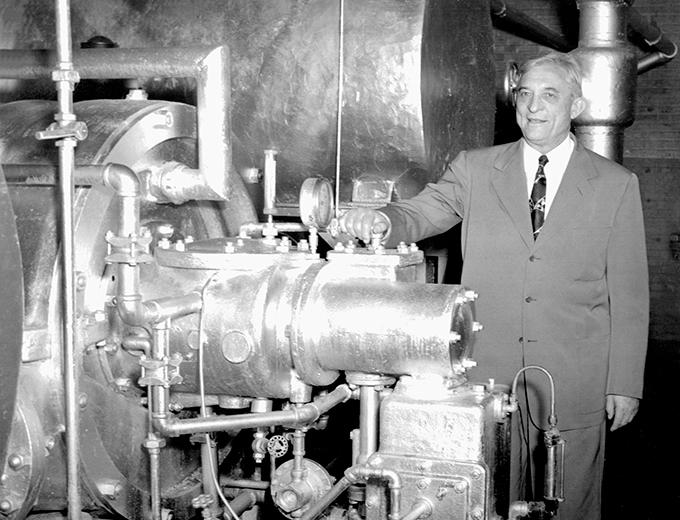Imagining life without air conditioning is nearly impossible. Since its’ invention in 1902, conditioners have become a standard feature in buildings all over the world. Air conditioning has allowed people to settle in harsh climates and increased productivity exponentially. Digital technologies would be impossible without AC cooling the enormous amount of heat computers give off. Conditioners have evolved over the past hundred years and engineers continue working to refine their efficiency and decrease their environmental harm. A recent article by Architectmagazine.com offers a brief history of air conditioners thanks to the publication archives of the Building Technology Heritage Library.
In 1902, the Sackett-Wilhelms Lithographing & Publishing Company contracted the Buffalo Forge Company to build a device that prevented humidity from destroying their magazines. Recent Cornell University graduate Willis Carrier had already created a few other successful designs, so he was given the task. He solved the problem by circulating cold water through metal coils. He passed warm air over these coils, transferring the heat into the water and returning the air to the room significantly cooler. Prior to these early conditioners, controlling air temperature and humidity was only achievable through clever architectural work. Homes in the southern U.S., for example, used a design known as the dogtrot. It used open corridors between sections of buildings to provide generous airflow and reduce temperatures.
Willis’s creation was a success. Factories were some of the first adopters, though they rapidly spread to other industries and soon into homes across the world. During the earlier years, movie theaters saw the genius of commercial air conditioners and installed them to attract customers out of the summer heat. These first models were expensive for individual owners, costing anywhere from $10,000 to $50,000, slowing their initial spread. However, after WW2 prices dropped and one million units were sold to homeowners in 1953. This increased affordability caused the populations of the U.S. Sunbelt to grow. The region is estimated to have grown from housing 28% of the country’s population in 1950 to 40% in 2000.
Today, the U.S. Department of Energy estimates that heating and cooling accounts for 48% of all electrical usage in the country. Modern central air conditioners have reduced energy consumption by up to 50% from the 1970’s and up to 40% from the early 2000’s. This saves money for consumers but also reduces the environmental impact of AC. Energy Star is a voluntary program by the Environmental Protection Agency that manufacturers participate in to show their commitment to protecting the global climate. Consumers can look for this rating to find units that are up to 16% more efficient. New refrigerants are also being implemented. Manufacturers are removing toxic substances such as Freon and replacing them with new materials that the DOE hopes will drop emissions by 26% in the future. These advancements will only continue as they expect the industry to surpass over $100 billion as developing nations adopt air conditioning technologies.




